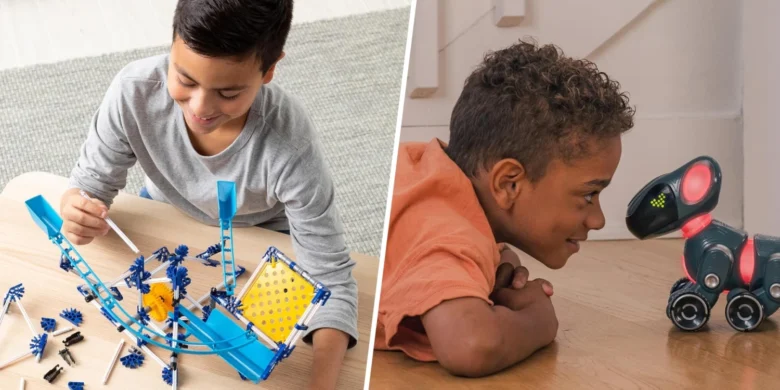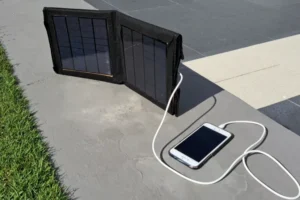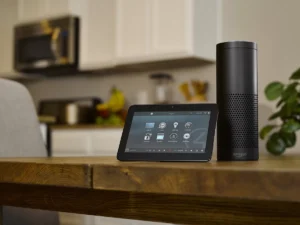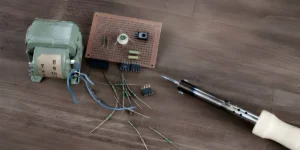Young kids today have much to love about technology. From gyroscope-powered robots and basketballs with apps connected to STEM toys for children that allow them to engineer amazing projects, today’s kids love technology! If virtual reality (VR) is more their style, try this fun lion hunting game that teaches them about nature or help them hone their skills with this virtual ping-pong set.
1. SnapCircuits
Elenco’s award-winning Snap Circuits electronics kits make learning circuitry fun and interactive for kids. Kids can follow colourful pictures in the manual to assemble projects such as a 3-colour light tunnel, projector with six images and more using components mounted on plastic modules that snap together easily – plus these kits are safer than traditional electronic kits for children!
Snap Circuits components easily snap together onto a base grid that resembles a solderless breadboard and are easy to identify due to a printed schematic symbol on each one. Unfortunately, Snap Circuits manuals contain extensive written text, so children who struggle with reading may need help from their parents in reading through them.
3. Gears! Gears! Gears!
Kids can build their own playtime fun with this massive tub of colourful gears! Following the instructions to build various machines and vehicles or unleashing their imagination to build towers, creatures or other structures with this open-ended construction toy are just two options for building fun playtime fun!
Learning Resources’ 100-piece building set provides endless building possibilities. It helps develop fine motor skills and hand-eye coordination and encourages creativity as well as hands-on construction play. Furthermore, this set teaches basic concepts such as cause-effect relationships, problem-solving techniques and colour identification. Our almost three-year-old grandson loves how easily the gears snap in, enabling him to play independently with them and enjoy how they turn and spin – this high-quality toy will stand up over time.
4. SnapCircuits Electronics Kit
Elenco’s Snap Circuits make learning electronics fun by building engaging projects. Children can follow colourful pictures in the manual to put together 130 projects ranging from FM radios and digital voice recorders to alarm systems – each snapping together on a baseboard which serves like a breadboard to produce functioning circuits that yield perceptible results.
Lego pieces snap together easily and can be reused over and over, yet their use is limited to a single grid base, unlike littleBits kits, which allow users to connect different electronic components together to build exciting devices of their own.
5. SnapCircuits Circuit Blocks
This educational electronic kit helps children explore engineering and circuitry with its modular components that snap together easily on plastic modules, along with user-friendly project manuals. Furthermore, its colour-coded components make this accessible for blind and low-vision learners.
Kids can build glow-in-the-dark flying propellers, solar-powered lights and optical theremins using Elenco’s groundbreaking Snap Circuits product line – building components with snaps can be assembled on an easy rows-and-columns base grid that functions similarly to printed circuit boards found in most electronic products. SnapCircuits can also be combined with regular building bricks to wire lights and motors.
6. SnapCircuits Electronics Kit for Raspberry Pi
Snap Circuits is an electronic kit for children designed to teach engineering, electronics, and circuitry concepts. With colourful manuals featuring numerous projects designed to teach kids about electricity and electronics, Snap Circuits helps children gain an understanding of how electricity and electronics operate.
Each component, like a resistor or push button, is contained within its own plastic block and connected via button snaps to its counterpart in the kit. Kids can add more components as desired for a customised setup. While Snap Circuits makes learning about electronics and electricity enjoyable, we would prefer that it offered more expansion possibilities – unlike LittleBits, which provides much greater openness.
7. SnapCircuits Electronics Kit for Arduino
SnapCircuit electronics kits use clothing-type snaps to securely connect electronic components that make up projects on a plastic base grid. This company offers various kits with themes including music creation, motion and physics. These project manuals feature full-colour images to help kids visualise the final product and understand how each circuit works. Some more advanced kits also teach basic coding through Arduino software.
SnapCircuits are tailored for children aged 8 years or above. At this age, children have developed enough fine motor skills to manipulate pieces as well as begin understanding basic physics concepts like polarity, rotational forces and mass conservation.
8. SnapCircuits Electronics Kit for Raspberry Pi 2
This set incorporates green elements into its award-winning snap-and-go circuit construction, giving kids a green education about alternative energy sources. A project manual offers step-by-step instructions on how to light an LED or power a fan, or they can unleash their creative side and come up with their own designs!
This set is recommended for children ages 8 and up; however, our DistribuFun histogram ties in perfectly with manufacturer recommendations and will likely prove rewarding to 6- and 7-year-olds with parental assistance. Each encased plastic component connects easily through its row-and-column base grid system.
9. SnapCircuits Electronics Kit for Arduino Lite
Elenco’s award-winning Snap Circuits sets are an engaging way for children to learn about electronics and electricity while creating engaging STEM projects such as AM radios or sound-activated switches. Learn to troubleshoot when errors arise with this set designed for kids aged 8 and up.
Snap Circuits provide an accessible way for children to get acquainted with basic electronic experiments without the complexities associated with soldering and expanded projects such as an Arduino kit. Unfortunately, however, they’re not expandable like Arduino kits are, and documentation doesn’t provide as much theory on why your project works in its current form.




